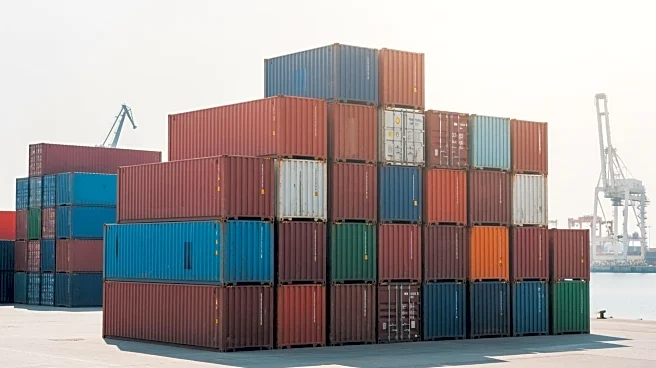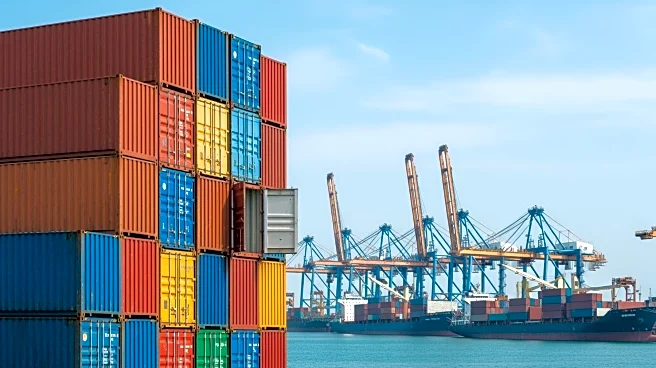What's Happening?
According to S&P Global Market Intelligence, U.S.-bound containerized freight imports fell by 5.8% annually in September, totaling 2.72 million TEU. Despite a 3.2% year-to-date increase, a 14.4% annual decline
is projected for the fourth quarter. The decline is attributed to reduced imports from Asia, particularly a 23.2% drop from mainland China. The downturn follows a period of tariff-related front-loading earlier in the year, with capital goods imports falling 25.7% and consumer electronics down 18.8%.
Why It's Important?
The decline in imports signals potential challenges for U.S. manufacturing and retail sectors, which rely on imported goods. The reduction in capital goods imports could impact manufacturing capabilities, while decreased consumer electronics imports may affect retail inventories. The ongoing trade tensions and tariffs contribute to market uncertainty, influencing business strategies and economic forecasts. Stakeholders, including importers and policymakers, must navigate these challenges to maintain economic stability.
What's Next?
The import downturn is expected to continue through the third quarter of 2026, with potential impacts on supply chains and pricing strategies. Businesses may need to adjust sourcing and inventory management to mitigate risks. Policymakers might consider trade policy adjustments to support economic growth. The situation requires close monitoring of trade negotiations and economic indicators to anticipate further developments.













